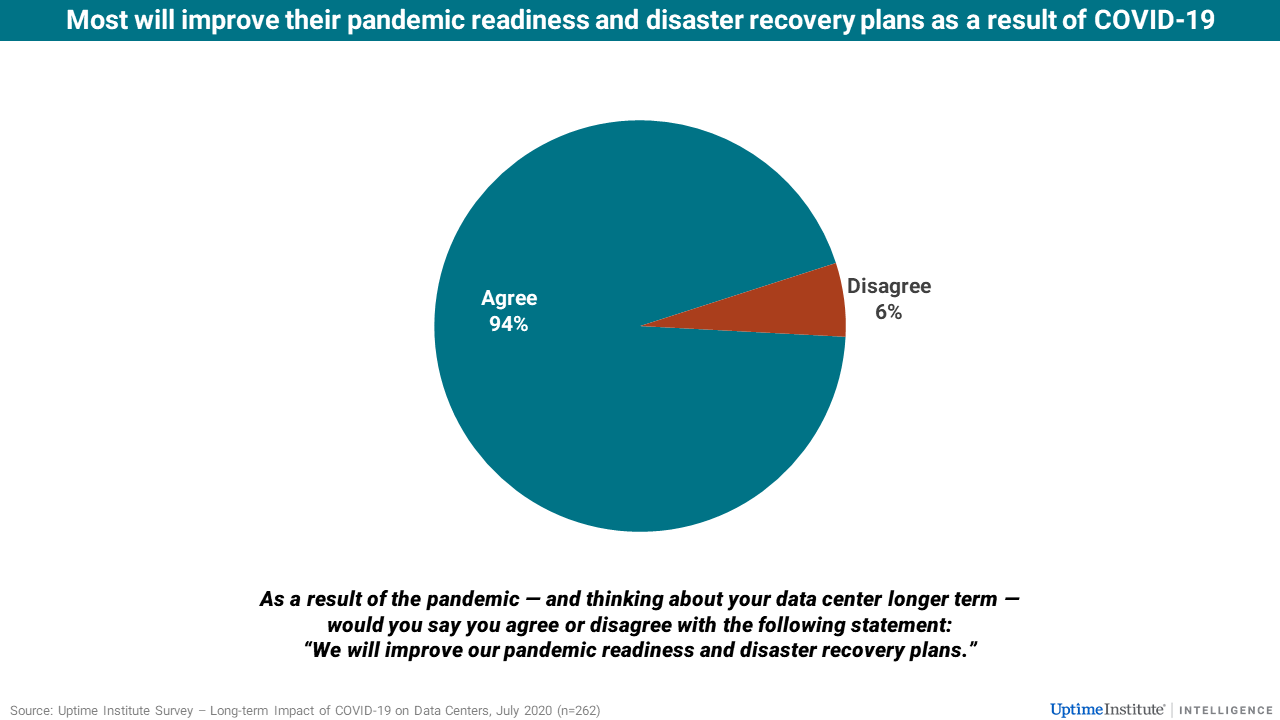Pandemics: Operators plan to be ready next time
Data center managers, on both the facilities and the IT side of operations, are known for their preparedness. Even so, the pandemic caught most by surprise. Few had an effective pandemic plan in place, and most had to react and adapt on the fly, as best as they could. A small but significant number suffered outages or service brownouts as a result of changed traffic patterns, component shortages and staffing problems.
Operators do not intend to be caught out again. Virtually all (94%) of the respondents to a July 2020 Uptime Institute COVID-19 impact survey said they will improve their pandemic readiness and business continuity planning (see figure below).

Against a background expectation that another pandemic will occur, pandemic awareness and planning have already been added to the business continuity playbook at many organizations, both as an extension to management and operations and to disaster recovery planning.
Some of the procedures and processes that managers expect to have in place in two to three years’ time require changes in technology and strategy and may involve major investments. For example, more are planning to adopt remote monitoring and some automation, and to strengthen resiliency — all of which require investment and planning.
But more routinely, operators expect to clean more regularly, to separate workers into teams, to conduct health screening for visitors, to change air filters more often, and to store more spare parts. These are all part of pandemic awareness and amended processes; they are not short-term measures, but long-term adaptations. Some plan to add emergency accommodation and food storage on-site.
A number of operators also told Uptime Institute they will also enhance their rapid response plans so they will be ready to move to a high alert status at any moment. This will involve immediate implementation of staffing plans, organizing emergency fuel supplies, and changing maintenance processes, for example. To help, they may store personal protective equipment, pay for third-party services, buy reserve cloud capacity, and move to pre-agreed maintenance and management procedures. Staff are likely to be routinely trained in pandemic control and response — an area rarely touched upon before COVID-19.
For more detailed guidance on pandemic preparedness, see our report Pandemic planning and response: A guide for critical infrastructure. The full report Post-pandemic data centers is available to members of the Uptime Institute Network here.



 UI @ 2021
UI @ 2021

 Uptime Institute
Uptime Institute


 2020
2020 UI @ 2020
UI @ 2020